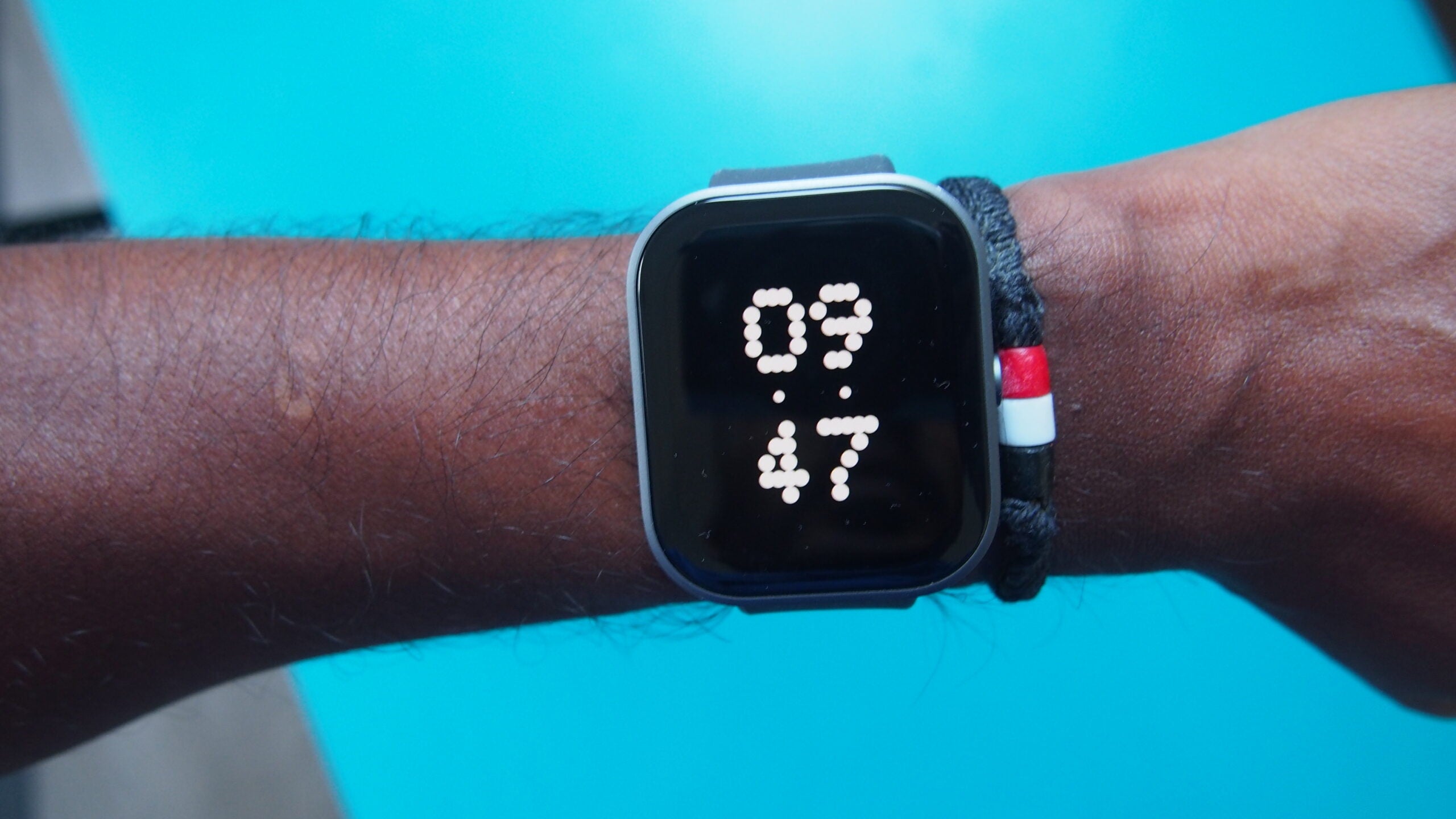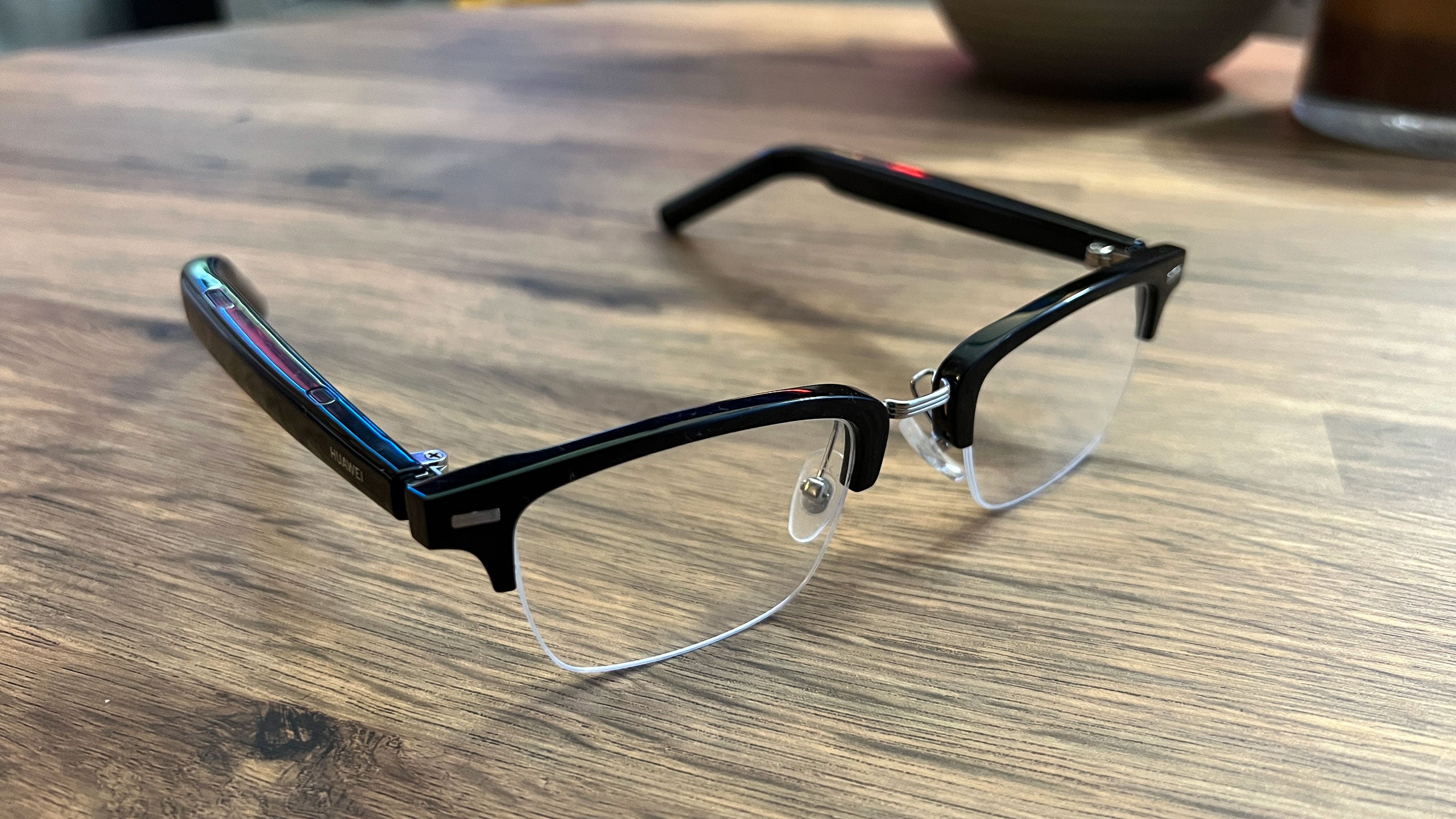Suunto Race Review
Suunto is back in the game and undercuts the competition
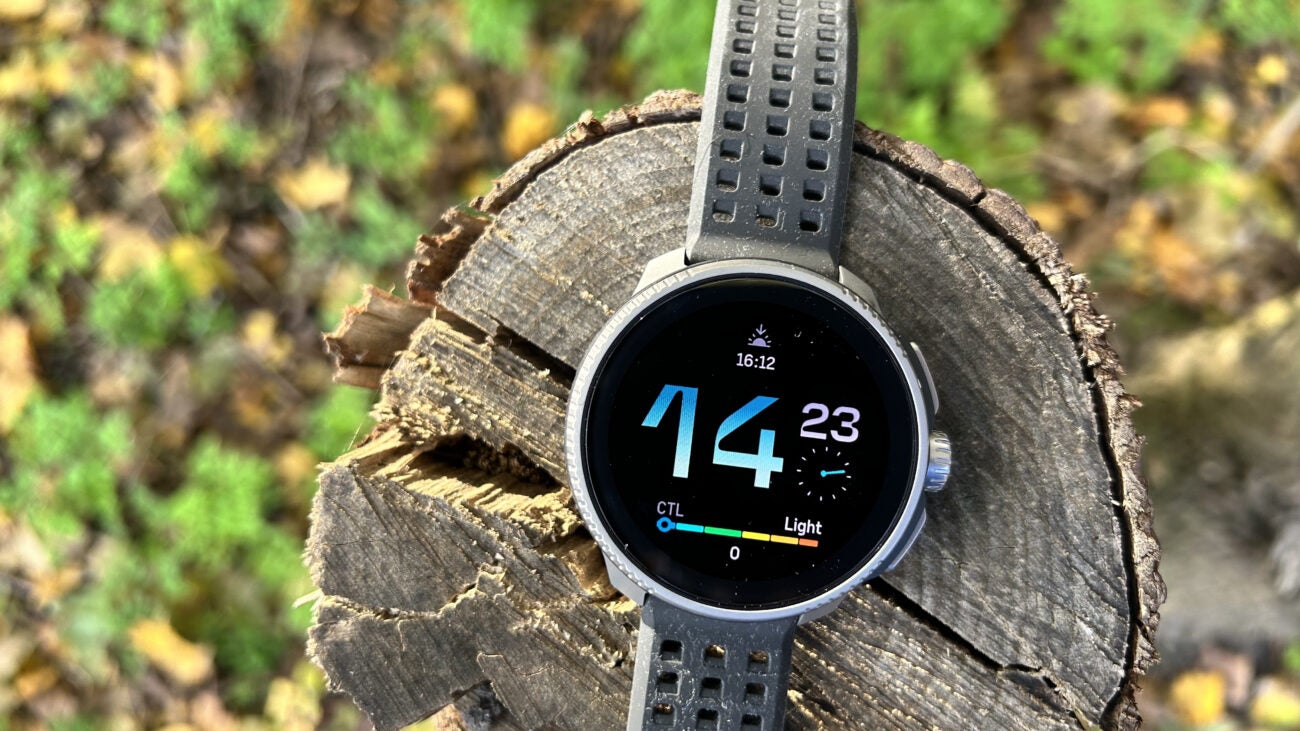
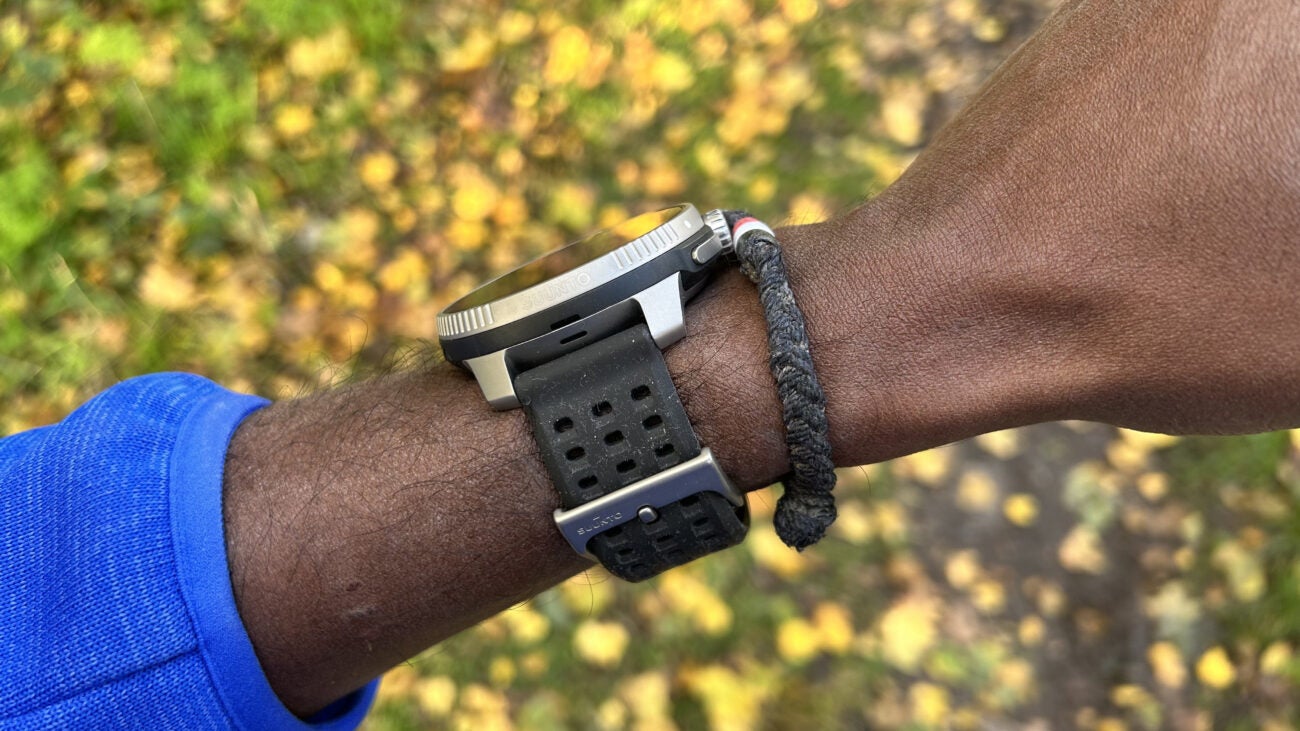

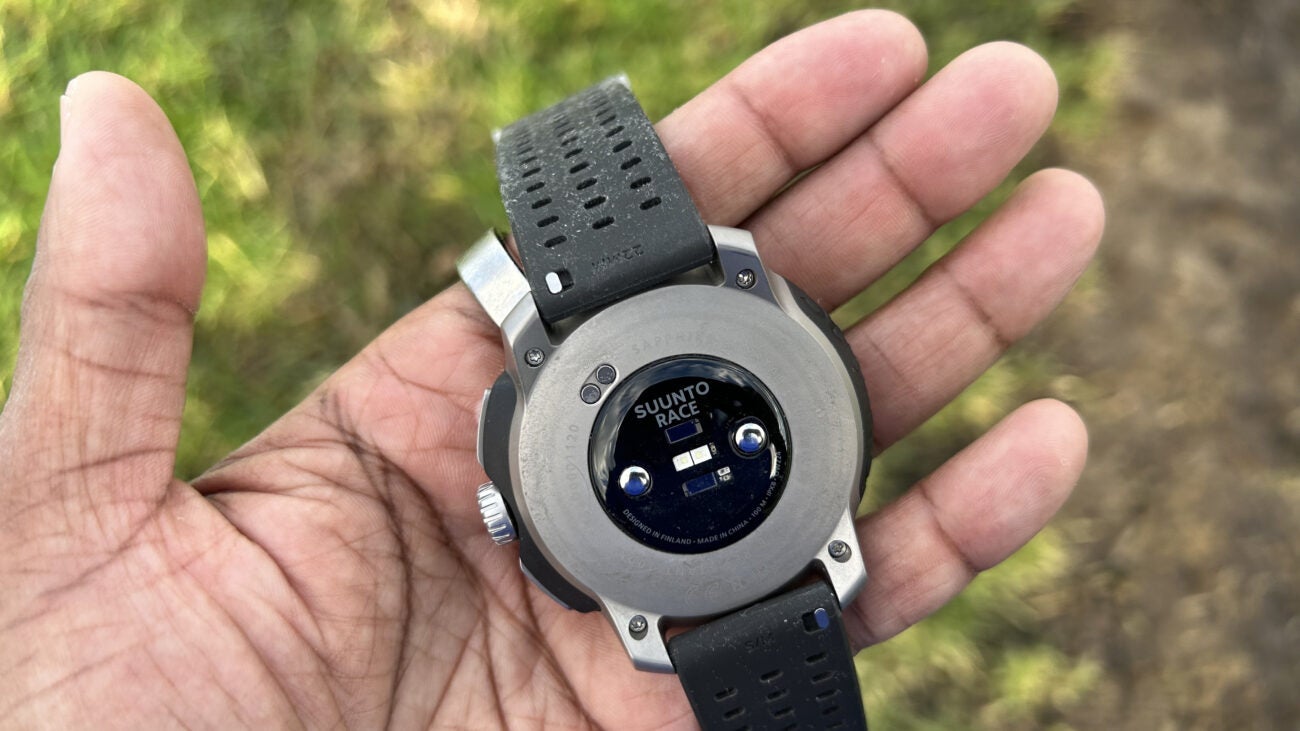

Verdict
The Suunto Race is a great multisports watch with a colour screen that comes in cheaper than the competition and shows Suunto is back on track.
Pros
- Welcome AMOLED screen
- Solid sports tracking performance
- Battery life in always-on mode
Cons
- Watch software is laggy
- Not a great sleep tracker
- Recovery insights not massively engaging
Key Features
- 1.4-inch AMOLED touchscreenThe high-definition AMOLED screen ensures vivid colours and deep blacks.
- Heart rate and blood oxygen trackingAble to track your heart rate variability thanks to the high-tech sensors.
- Up to 26 days battery lifeCan last up to 26 days on a single charge if you use the basic watch mode.
Introduction
The Suunto Race is Suunto’s first true sports watch with an AMOLED display as it joins Apple, Garmin and others in moving away from less colourful screen technology.
It’s billed as a performance watch for racing and training and aims to put a watch on your wrist that will accurately track your movements, analyse that training time to make better training decisions and also be useful when you’re not getting all sweaty.
It’s a watch that comes in cheaper than the excellent Garmin Forerunner 965, Apple Watch Ultra 2 and the newly announced Polar Vantage V3, so should you be racing with the Suunto Race? Here’s my take.
Design and screen
- Stainless steel or titanium bezel options
- AMOLED display with always-on mode
- MIlitary tested design
Suunto has certainly stepped things up on the looks front with its watches in recent years, and the Race is another very attractive instalment.

You’re getting a military tested, 49mm-sized watch that measures in at 13.3mm thick and packs a polymer case with a matching silicone strap that can be easily removed. Like Suunto’s Vertical watch, you can grab the Race with either a stainless steel or titanium bezel (pictured). Going for titanium pushes the price up, giving you a design-dominating bezel that still manages to keep things down to a manageable weight.
Suunto opts for three physical buttons, including a rotating crown to scroll through the watch software. Those are flanked by flatter buttons, with the top one giving you quick access to the workout tracking screen and the bottom one getting you to the control panel settings menu.
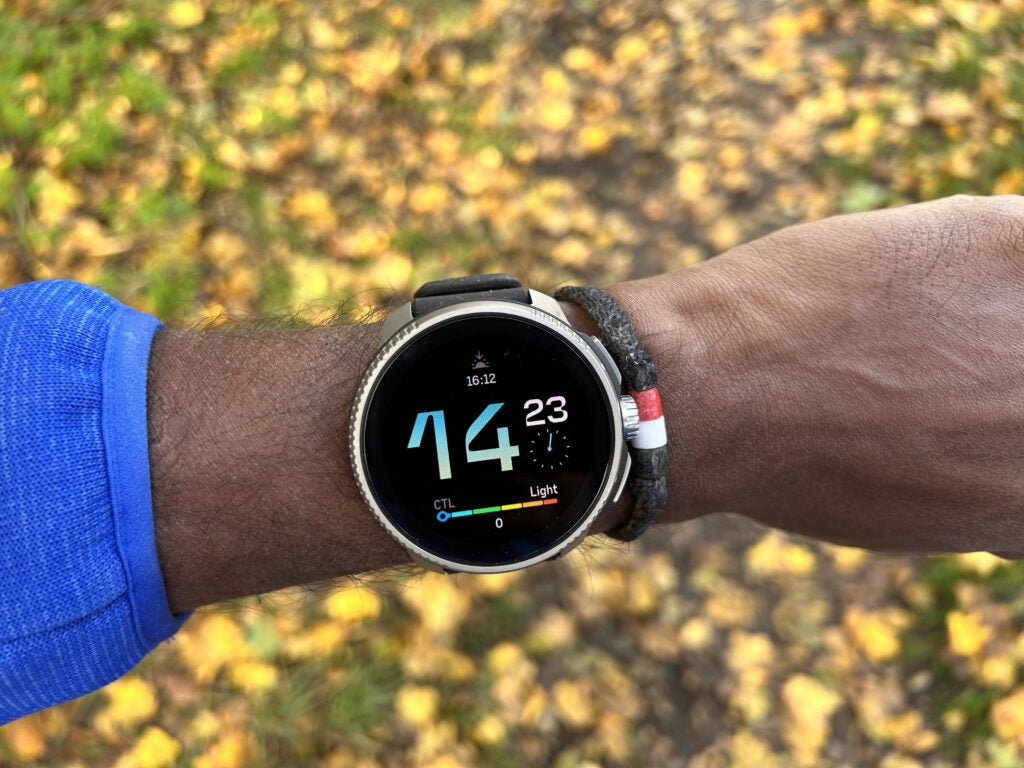
Suunto includes a 1.43-inch, 466 x 466 resolution AMOLED touchscreen display. It’s a good-sized screen and strong quality AMOLED panel, which can be set to stay on 24/7. I’ve had no major visibility issues with it. It can go nice and bright and it’s essentially giving you a higher resolution panel than the one featured on the Garmin Forerunner 965.
The watch carries a strong waterproof rating, letting you take it for a dip up to 100 metres depth. I’ve worn it for swims and kept it on in the shower and it’s all still in working order.
Software and smartwatch features
- View notifications and control music playback
- Access to SuuntoPlus apps
- Software is laggy
Suunto has looked to vastly improve the software experience on this watch compared to previous watches. It’s definitely been an area that’s needed work and the Race does signal a step in the right direction with some work still yet to be done.
Swiping down from the watch screen gets you to the workout tracking screen. Swiping the other direction from the same place gets you to your settings menu and to glance at continuous wellness and recovery metrics. You can also pin some of those metrics and features as full screen widgets.
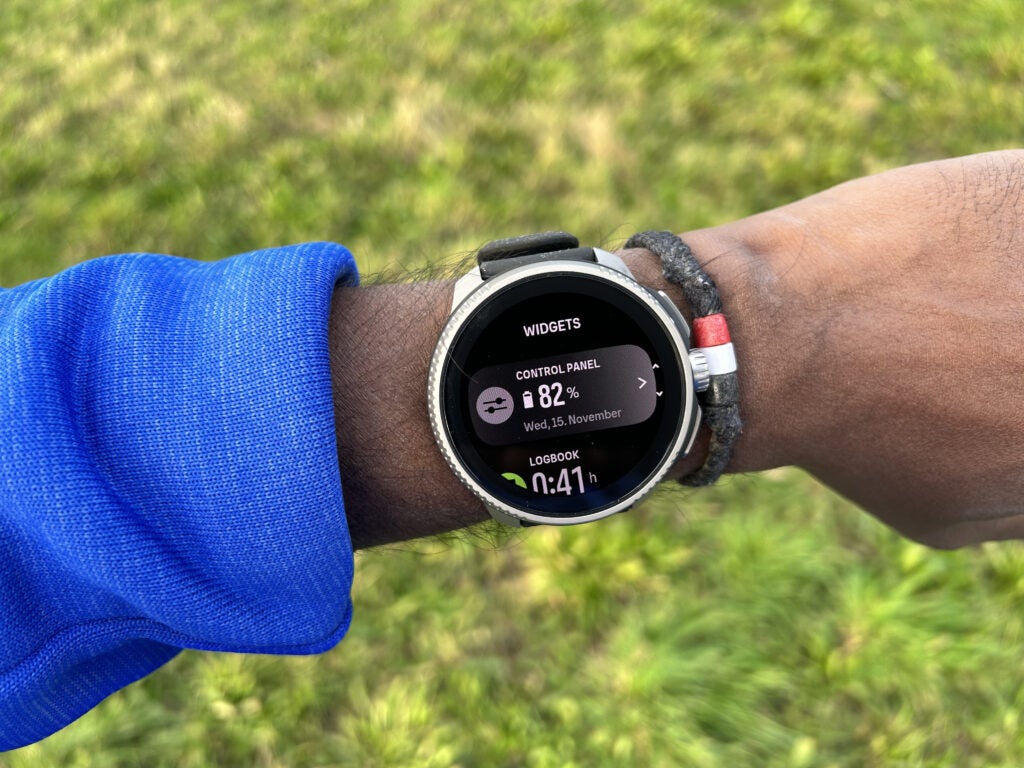
It’s certainly a much more straightforward Suunto watch to use than previous Suunto watches, but one issue unfortunately remains, and that’s the screen lag. It’s frustrating because everything else Suunto has done here with the software works well and is let down by that quite noticeable lag when interacting with it.
The Suunto companion app isn’t the most user-friendly experience either and feels a bit busy. You do have access to Suunto’s SuuntoPlus app storefront, which lets you add everything from a score counter for a game of darts to a gym timer. It’s no Apple Watch app store, but it does mean you can enhance the Race’s usefulness outside of the core sports features.

As a smartwatch, you’re not getting Apple or Garmin levels of smartwatch features. You can view notifications and there’s some useful music playback controls while you can view weather forecasts and sunset and sunrise times. What is here works well. It’s not the richest notification support you’ll find on a sports watch or smartwatch, but if you can live with the basics, it does those well enough.
Fitness tracking
- Dual-band GPS mode
- Free offline maps
- HRV recovery insights
The Suunto Race is an entirely new watch series for Suunto and while its previous watches have leaned on being more focused on adventurers, the Race feels more in the mould of watches like the Garmin Forerunner and Polar’s Vantage series. It’s a multisports watch with over 95+ sports modes and wants to be a watch that accurately tracks your training, offers guidance and analyses your training and will still appeal to your inner adventurer spirit.
The core sports tracking experience is solid on the whole. It has the dual-band GPS mode that Suunto included on its Vertical watch and similarly performs well to boost accuracy in challenging locations, like tracking near tall buildings or in highly forested areas. I’ve been using it against Garmin’s impressive dual-band mode along with the same mode on Polar’s new Vantage V3 and the Race has held up really well on the accuracy front.
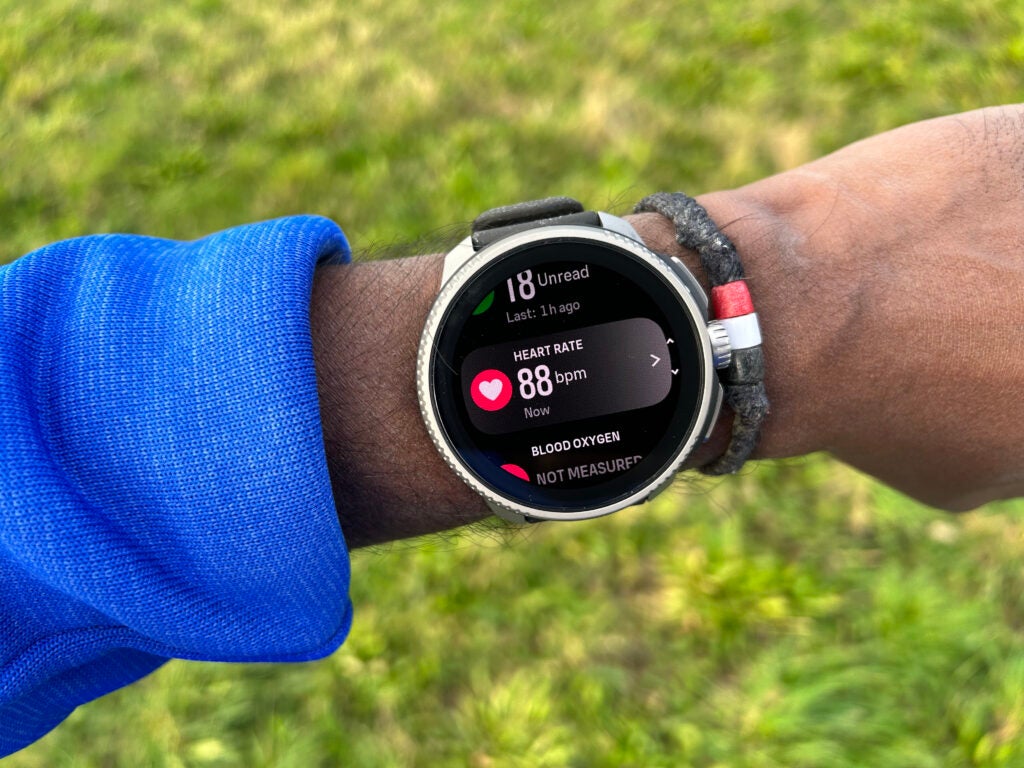
I’ve used it for swims and indoor workouts like rowing and treadmill runs and the data accuracy has been very good. It’s been a bit more of a mix bag with the heart rate tracking however. Even for some steady paced workouts the average and maximum heart rate readings have not quite been in line with a heart rate monitor chest strap.
It was a similar story for continuous heart rate data, where the Race typically posted higher readings than Garmin’s reliable continuous monitoring support. You can at least pair external heart rate monitors to remedy that accuracy issue and I’d advise on doing that based on my experience.
Another big feature here is the mapping and navigation support. Again, this was a feature that debuted on the Suunto Vertical and now it also gets a splash of colour for those free maps. To get those maps you’ll need to download sections of maps you want on the Suunto companion app and then sync them over to the watch via Wi-Fi once you’ve dropped it back on the charger. Downloading and syncing a portion of a map can take a while. It took over an hour when I had to do it, just to grab London off the available regions.

The mapping and navigation mode works well. You can use the touchscreen and rotating crown to zoom and move around maps and the colour does add a new dimension in terms of picking out detail like greener areas or bodies of water that are in the vicinity. If you want to put the navigation features to use, you’ll need to create a route in the Suunto app and enable the navigation support before it starts usefully pointing you in the right direction outside.
Suunto’s training and analysis features are intertwined with the Race’s fitness and sleep tracking features, which arguably aren’t this watch’s greatest strength. This is led by Recovery HRV, which requires two weeks of sleep tracking data and suggests you track sleep at least 3 times a week to make sure those recovery insights are insightful. During that sleep Suunto is capturing heart rate variability measurements to better understand your recovery in between training.

I used it alongside Garmin’s HRV status mode, which performs in a similar fashion and HRV averages were generally in line. The Suunto Race sleep tracking, however, wasn’t hugely reliable. While it captured similar sleep periods as the Oura Ring Gen 3, the actual sleep time recorded was significantly shorter at times. Ultimately, it feels like a recovery metric that in isolation feels a bit complex to take on board and put to really good use.
There’s a Suunto Coach that looks at your training load and how you’re feeling after a workout to indicate your fitness level and how you’re adapting to training. Again, it doesn’t feel like it’s a very engaging feature on the Suunto Race. I wouldn’t say Suunto quite matches what Garmin and Polar offers on the training and analysis front just yet, but there’s clear room for improvement.
Battery life
- Up to 26 days days in basic watch mode
- 12 days battery in smartwatch mode
- Up to 120 hours GPS battery life
The Suunto Race promises some pretty impressive battery numbers and the battery performance on the whole is impressive for an AMOLED display-packing watch.
Suunto says you can get up to 12 days in smartwatch mode, which means displaying notifications and using the activity tracking features. That jumps to 26 days if you use the more restrictive basic watch mode.

I used the Suunto Race with a mix of having the screen set to always-on mode and also using the raise to wake gesture support, along with regular workout tracking and using the activity tracking and notifications enabled. I found that in more intensive use, daily battery drop-off was on average 10%. That still means you can get a good week out of this watch.
When you need to start using the GPS, in top GPS accuracy mode you can expect up to 40 hours and that goes all the way up to 120 hours if you reduce the sampling of GPS and ditch heart rate tracking. In that top, dual-band GPS mode, battery drop-off for over an hour of use was typically just less than 5%. So, it’s holding its own against watches like the Garmin Forerunner 965.
Latest deals
Should you buy it?
You want a more affordable, feature-packed multisports watch
The Suunto Race offers a sports tracking experience on par with pricier multisport watches from Garmin and Polar.
You want a good mix of smartwatch features
The Suunto Race won’t give you things like payments and a music player, with software that leaves you with that laggy feeling. Check out our Best Smartwatch list for better options.
Final Thoughts
Suunto was falling behind the competition and with the arrival of the Vertical and now the Race, it truly has a multisports watch that can truly be considered with the competition. Crucially, it also comes in cheaper than similarly specced watches from Garmin, Polar and Apple too. Check out our Best Running Watch guide for alternative options.
How we test
We thoroughly test every smartwatch we review. We use industry-standard testing to compare features properly and we use the watch as our main device over the review period. We’ll always tell you what we find and we never, ever, accept money to review a product.
Worn as our main watch during the testing period
Thorough health and fitness tracking testing
FAQs
Yes, you can view maps on the Suunto Race once you’ve downloaded and synced map files from the Suunto phone app.
Yes, the Suunto Race is waterproof and has a 100m water resistance rating, making it safe to be submerged up to 100 metres depth.




